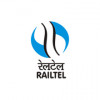Network Administrator
100+ Network Administrator Interview Questions and Answers

Asked in TCS

Q. Architecture of Firewalls worked, Previous role & responsibilities, What all things need to checked if enduser faces issues while accessing website or server, What if there is latency Any exceptional cases hand...
read moreInterview questions for Network Administrator role
Architecture of Firewalls
Previous role & responsibilities
Troubleshooting end-user website/server access issues
Handling latency issues
Exceptional cases in firewall troubleshooting
Understanding 3-way handshake
HSRP and its feasibility with different geolocations
TCP vs UDP differences
Understanding ISO OSI model

Asked in Railtel Corporation Of India

Q. What is the difference between L2 VPN and L3 VPN? Routing and Switching knowledge.. Certifications...
L2 VPN operates at the data link layer, while L3 VPN operates at the network layer.
L2 VPN provides layer 2 connectivity between remote sites, while L3 VPN provides layer 3 connectivity.
L2 VPN uses MAC addresses for forwarding, while L3 VPN uses IP addresses.
L2 VPN is typically used for connecting LANs, while L3 VPN is used for connecting networks.
L2 VPN is transparent to the network layer protocols, while L3 VPN requires routing protocols.
Examples of L2 VPN technologies inclu...read more
Network Administrator Interview Questions and Answers for Freshers

Asked in Cisco

Q. Two routers are connected, OSPF is enabled, but the link is down. What are the specific methods to bring the link up?
To link up two routers with OSPF enabled but link down, specific methods include checking physical connections, verifying OSPF configurations, and troubleshooting network issues.
Check physical connections and ensure cables are properly connected and not damaged
Verify OSPF configurations and ensure that the routers are configured with the same OSPF process ID and network type
Troubleshoot network issues by checking for any network outages or misconfigurations
Use tools such as p...read more

Asked in Capgemini Engineering

Q. What is the latest vulnerability Palo Alto Networks faced, and how would you proceed to protect your environment from it?
Discussing recent Palo Alto firewall vulnerabilities and mitigation strategies.
Stay updated on Palo Alto's security advisories and patches.
Implement strict access controls and segmentation to limit exposure.
Regularly review and update firewall rules to minimize attack surfaces.
Utilize threat intelligence feeds to identify and block known vulnerabilities.
Conduct regular vulnerability assessments and penetration testing.

Asked in Oracle Cerner

Q. 1. What is the difference between post 8.2 and pre 8.2 versions firewall 2. What is NAT Control ? 3. What is S Nat and specification ? And what is persistence in F5 4. How OSI works when one opens a Google page...
read moreAnswers to questions related to network administration including firewall, NAT control, OSI, TCP flags, VPN and encryption techniques.
Post 8.2 firewall versions have improved features and security compared to pre 8.2 versions
NAT control is a feature that allows or denies traffic based on NAT rules
S NAT is a type of NAT that translates the source IP address of a packet and persistence in F5 refers to maintaining a client's connection to a specific server
OSI works by breaking d...read more

Asked in TCS

Q. What is the difference between static and dynamic routing?
Static routing uses manually configured routes while dynamic routing uses protocols to automatically update routes.
Static routing requires manual configuration of routes while dynamic routing uses protocols to automatically update routes.
Static routing is best suited for small networks with few changes while dynamic routing is better for larger networks with frequent changes.
Examples of static routing protocols include OSPF and BGP while examples of dynamic routing protocols ...read more
Network Administrator Jobs




Asked in Capgemini

Q. What is network, ip address and range of the ip address
A network is a group of interconnected devices that communicate with each other. An IP address is a unique identifier assigned to each device on a network.
A network is a collection of devices such as computers, printers, and servers that are connected to each other.
An IP address is a unique identifier assigned to each device on a network to enable communication between devices.
The range of an IP address is determined by the subnet mask, which specifies the number of bits used...read more

Asked in Capgemini

Q. What is Subnetting, host , configuration of network, what is Standar acl and extended acl. Rip ,eigrp ,bgp, ospf
Answering questions related to network administration including subnetting, host configuration, and routing protocols.
Subnetting involves dividing a network into smaller subnetworks for better management and security.
Host configuration refers to the setup and management of individual devices on a network.
Standard and extended ACLs are used to control access to network resources based on IP addresses.
Routing protocols like RIP, EIGRP, BGP, and OSPF are used to determine the be...read more
Share interview questions and help millions of jobseekers 🌟


Asked in Hitachi Systems Micro Clinic

Q. Why do you want to join interworking and desktop support?
I am interested in joining interworking and desktop support because of my passion for troubleshooting and helping others with their technical issues.
I enjoy problem-solving and finding solutions to technical issues
I have experience in desktop support and enjoy working with end-users
I am interested in learning more about interworking and network administration
I believe my skills and experience would be a good fit for this role

Asked in Incedo

Q. what is STP, HSRP,FRRP, what is the difference between hsrp and vrrp and why hsrp is better than vrrf
STP, HSRP, and FRRP are network protocols used for redundancy and failover. HSRP and VRRP are similar but HSRP is preferred.
STP (Spanning Tree Protocol) prevents loops in a network by disabling redundant links
HSRP (Hot Standby Router Protocol) and VRRP (Virtual Router Redundancy Protocol) provide redundancy by allowing multiple routers to share a virtual IP address
FRRP (Fast Router Redundancy Protocol) is a Cisco proprietary protocol that provides faster failover than HSRP an...read more

Asked in Accel Limited

Q. How can we route between two VLANs in a switch LAN network?
To route between two VLANs in a switch LAN network, you can use a Layer 3 switch or a router.
Configure inter-VLAN routing on a Layer 3 switch by creating SVIs (Switch Virtual Interfaces) for each VLAN and enabling routing.
Use a router to route between VLANs by connecting the router to the switch and configuring subinterfaces on the router for each VLAN.
Implement VLAN trunking between the switch and the router to carry traffic for multiple VLANs over a single link.
Ensure that ...read more

Asked in Wipro

Q. F5 bigip load balancer 5 pool members are configured out of which 2 are down and 3 are up.
2 out of 5 pool members are down in F5 bigip load balancer.
The load balancer is currently using the 3 available pool members to distribute traffic.
The 2 down pool members need to be fixed or removed from the pool to prevent traffic from being directed to them.
The load balancer should be monitored to ensure that it is functioning properly and distributing traffic evenly.
If necessary, additional pool members can be added to the pool to handle increased traffic or to provide red...read more

Asked in TCS

Q. What are unicast, multicast, and broadcast?
Unicast, multicast and broadcast are types of network communication.
Unicast is a one-to-one communication between a sender and a receiver.
Multicast is a one-to-many communication where a sender sends data to a group of receivers.
Broadcast is a one-to-all communication where a sender sends data to all devices on the network.
Unicast is used for communication that requires privacy and security.
Multicast is used for streaming media, video conferencing, and online gaming.
Broadcast...read more

Asked in Infosys

Q. How does F5 load balance traffic?
F5 load balances traffic by distributing it across multiple servers to optimize performance and ensure high availability.
F5 uses a variety of load balancing algorithms such as round robin, least connections, and weighted round robin.
It distributes incoming traffic across multiple servers based on the selected algorithm.
F5 continuously monitors server health and availability to make intelligent load balancing decisions.
It can perform SSL offloading, caching, and compression to...read more

Asked in Emcure Pharmaceuticals

Q. 1. what is mpls ? 2. how vrf travel ? 3. what's is cef work in mpls ? 4. routing protocols configuration
MPLS is a protocol used to speed up and shape network traffic. VRFs allow multiple virtual networks to coexist on a single physical network. CEF is a forwarding mechanism used in MPLS. Routing protocols are used to exchange routing information between routers.
MPLS stands for Multiprotocol Label Switching and is used to improve network performance by reducing the time it takes for packets to travel through a network.
VRFs (Virtual Routing and Forwarding) allow multiple virtual ...read more

Asked in Media Net

Q. Which BGP attributes are used for controlling inbound and outbound traffic?
BGP attributes used for controlling inbound & outbound traffic are Local Preference, AS Path, and MED.
Local Preference: Used to influence the path selection within an autonomous system (AS). Higher value means preferred route.
AS Path: Specifies the ASes that the route has traversed. Shorter AS Path is preferred.
MED (Multi-Exit Discriminator): Used to influence the path selection between different ASes. Lower MED is preferred.

Asked in Narola Infotech

Q. How do you add a system to a domain if there is a DNS error?
To add a system in domain with DNS error, first resolve the DNS issue and then add the system to the domain.
Check the DNS settings and ensure they are correct
Verify that the DNS server is running and accessible
Flush the DNS cache on the system
If necessary, add a static DNS entry for the domain controller
Once the DNS issue is resolved, add the system to the domain as usual

Asked in Incedo

Q. What is the XLATE table in ASA, and how do you troubleshoot IPsec tunnels?
The xlate table in ASA is used to keep track of translations between internal and external IP addresses. It is important for IPsec tunnel troubleshooting.
The xlate table is used to map internal IP addresses to external IP addresses
It is important for troubleshooting IPsec tunnels because it allows you to see if traffic is being translated correctly
You can view the xlate table using the 'show xlate' command in the ASA CLI
If there are issues with the xlate table, it can cause I...read more

Asked in TCS

Q. Tell me something about OSPF layers.
OSPF has three layers: backbone, area, and interface.
Backbone layer connects all areas and is responsible for routing between them.
Area layer groups networks together and reduces the amount of routing information exchanged.
Interface layer connects routers to the network and exchanges routing information within an area.
OSPF uses a hierarchical structure to efficiently manage large networks.
Each layer has its own set of rules and protocols for communication and routing.
Example:...read more

Asked in Accel Limited

Q. What is your knowledge of cable types and their supported speeds?
Different cable types have different supported speeds, such as Cat5e supporting up to 1 Gbps and Cat6 supporting up to 10 Gbps.
Cat5e - supports up to 1 Gbps
Cat6 - supports up to 10 Gbps
Cat6a - supports up to 10 Gbps at longer distances
Fiber optic cables - support much higher speeds than copper cables

Asked in Wipro

Q. How can you connect an interface between a server and a laptop without using a switch?
You can directly connect the server and laptop using a crossover Ethernet cable.
Use a crossover Ethernet cable to connect the server's network interface card (NIC) to the laptop's NIC.
Assign static IP addresses to both the server and laptop in the same subnet.
Configure the network settings on both devices to ensure they are on the same network.
Test the connection by pinging the server from the laptop to verify connectivity.

Asked in Lyra Network

Q. Different between multiple firewall with Palo Alto and past working experiences
Multiple firewalls with Palo Alto offer advanced security features compared to past experiences.
Palo Alto firewalls offer advanced threat prevention capabilities such as URL filtering, antivirus, and intrusion prevention.
Multiple firewalls can be configured to work together to provide high availability and load balancing.
Past experiences may have involved less advanced firewalls with limited capabilities.
Palo Alto firewalls also offer centralized management and reporting thro...read more

Asked in Future Focus Infotech

Q. What are the differences between NAT and PAT, and how are they configured?
NAT and PAT are both techniques used in networking to translate IP addresses. NAT translates one IP address to another, while PAT translates multiple IP addresses to a single IP address.
NAT stands for Network Address Translation and is used to translate private IP addresses to public IP addresses.
PAT stands for Port Address Translation and is a type of NAT that translates multiple private IP addresses to a single public IP address using different port numbers.
NAT is typically...read more

Asked in Cisco

Q. What are the differences between RIP and OSPF protocols?
RIP and OSPF are routing protocols used in computer networks.
RIP is a distance-vector protocol while OSPF is a link-state protocol.
RIP uses hop count as the metric while OSPF uses cost.
OSPF supports VLSM and CIDR while RIP does not.
OSPF is more scalable and efficient for larger networks than RIP.
RIP broadcasts its routing table updates while OSPF uses multicast.
OSPF has a faster convergence time than RIP.
RIP is simpler to configure and troubleshoot than OSPF.

Asked in TCS

Q. What is the difference between TCP and UDP?
TCP is a connection-oriented protocol while UDP is a connectionless protocol.
TCP provides reliable, ordered, and error-checked delivery of data while UDP does not guarantee reliable delivery.
TCP is slower but more reliable while UDP is faster but less reliable.
TCP is used for applications that require high reliability and accuracy while UDP is used for applications that require speed and efficiency.
Examples of TCP-based applications include email, file transfer, and web brows...read more

Asked in TCS

Q. What is the Border Gateway Protocol (BGP) table and how does it function?
BGP table stores routing information for inter-domain routing, enabling efficient data packet delivery across the internet.
BGP table contains routes learned from other BGP peers, including attributes like AS path, next hop, and prefix.
Routes in the BGP table are selected based on various attributes, with the best route being used for packet forwarding.
Example: If a network has multiple paths to reach a destination, BGP will choose the path with the shortest AS path.
BGP tables...read more

Asked in TCS

Q. What is the OSPF (Open Shortest Path First) table, and how does it function?
OSPF is a link-state routing protocol that uses a table to manage routing information efficiently.
OSPF maintains a Link-State Database (LSDB) that contains information about the network topology.
Each OSPF router generates Link-State Advertisements (LSAs) to share its routing information with other routers.
The OSPF table is built from LSAs and is used to calculate the shortest path to each destination using Dijkstra's algorithm.
Example: If Router A has a direct connection to R...read more

Asked in Accel Limited

Q. Difference btw switch and router and L3 switches?
Switch forwards data within a network based on MAC addresses, router forwards data between networks based on IP addresses, L3 switch combines features of both.
Switch operates at Layer 2 of the OSI model, forwarding data based on MAC addresses.
Router operates at Layer 3, forwarding data between different networks based on IP addresses.
L3 switch combines features of both switch and router, capable of routing based on IP addresses while also performing switching functions at Lay...read more

Asked in Future Focus Infotech

Q. What are static and dynamic routing, and what are their AD values?
Static routing uses fixed paths, while dynamic routing adapts to network changes, enhancing efficiency and reliability.
Static routing is manually configured and does not change unless altered by an administrator.
Dynamic routing uses protocols like RIP, OSPF, and BGP to automatically adjust routes based on network conditions.
Example of static routing: A small office network with a single path to the internet.
Example of dynamic routing: A large enterprise network that needs to ...read more

Asked in Cisco

Q. Which LAN switching is used in Catalyst 5000?
Catalyst 5000 uses shared memory LAN switching.
Catalyst 5000 uses a shared memory architecture for LAN switching.
This allows for high-speed switching between ports.
The shared memory architecture also allows for advanced features like VLANs and QoS.
Examples of Catalyst 5000 models include the 5500 and 5002.
These switches were popular in the 1990s and early 2000s.
Interview Questions of Similar Designations
Interview Experiences of Popular Companies





Top Interview Questions for Network Administrator Related Skills

Calculate your in-hand salary
Confused about how your in-hand salary is calculated? Enter your annual salary (CTC) and get your in-hand salary


Reviews
Interviews
Salaries
Users










